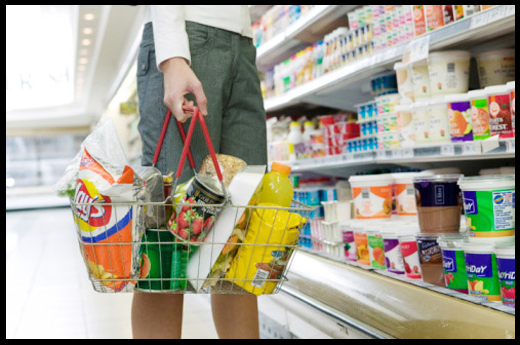Reporter, SmartMoney.com
How do the supermarkets do it? Here are five ways.
1. Eye Candy
Most shoppers are fully aware that supermarkets deliberately put candy and magazines at the checkout counters, where they can easily tempt bored and hungry shoppers. But it doesn”t stop there. Throughout the store, supermarkets strategically arrange products on the shelves in a way that makes you buy more.
Take, for example, the cereal aisle — it”s usually located directly across from the candy section. “It”s a mother”s greatest nightmare,” Lempert says. “You”ll find breakfast cereals on one side and candy on the other.” Why? So kids can check out the candy while Mom is filling up the cart with breakfast cereal — a must-buy on most shopping trips. Likewise, sugary kids” cereals are always on the lower shelves, at a child”s eye level and within reach of little arms.
What you can do: If possible, leave the children at home so you don”t end up buying too much junk food. Kimberly Danger, founder of Mommysavers.com, usually “bribes” her two kids with lollipops while shopping. “It keeps them occupied and they”re not distracted by the candy,” she says.
2. End-Aisle Deception
Most folks assume that the items located at the end of the aisles (i.e. those items displayed as you do your U-turn into the next aisle) are chock full of sale items. Not necessarily. “People think that if it”s out on that end it must be some kind of a special deal,” says Jack Taylor, professor of retailing at Birmingham-Southern College in Birmingham, Ala. “More often than not, it isn”t.”
Needless to say, food manufacturers are well aware of this. “That real estate is so valuable, companies actually pay the store to have their merchandise put there,” Taylor says.
What you can do: Go through the aisles to look for better deals.
3. Shelf Shuffles
Suddenly can”t find your favorite jar of peanut butter? Supermarkets regularly move items throughout the store so shoppers walk around longer and buy more stuff, according to Lempert. The tactic also encourages consumers to try new products, which are typically put in the place of top-selling items.
What you can do: Before trying that new brand, check the price to see if you”re spending more than you would for your old favorite. If you are, take the time to track down what you were originally looking for.
4. Cozy Cafe’s
Has your supermarket gotten so comfortable that you feel like you could practically spend the whole day there? That”s exactly the plan. “Whenever a supermarket can keep you in the store longer, you”ll spend more money,” Lempert says. “We see more supermarkets putting in coffee shops to make the shopping experience longer.”
Another ploy: Playing slow music, which encourages you to move slowly as you walk through the aisles — and buy more stuff you don”t really need.
What you can do: Get your caffeine fix before you go shopping and try to get in and out of the supermarket as fast as you can.
5. Follow Your Nose
Notice how the mouthwatering smell of cookies greets you at the supermarket entrance? While supermarkets don”t fabricate smells, according to Lempert, they do use smells to encourage more shopping. “The more the store can attract all our senses the more we”re going to buy,” he says.
Whole Foods supermarkets, for example, have started adding chocolate-making stations. And don”t think that putting the rotisserie chicken near the entrance is a coincidence. “It”s one of the first things you see when you walk into the store wondering what to make for dinner,” Danger says. Don”t forget samples, either, which most supermarkets give out to trigger your appetite.
What you can do: Never enter the supermarket hungry.








